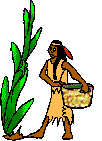

 |
 |
1.) Identify historical and current economic, political, and geographic
information about Alabama on thematic maps.
|
|
|
 Examples:
weather/climate maps, physical relief maps, waterway maps,
transportation maps, political boundary maps, economic development maps,
land-use maps, population maps Examples:
weather/climate maps, physical relief maps, waterway maps,
transportation maps, political boundary maps, economic development maps,
land-use maps, population maps |
|
|
 •
Discussing patterns and types of migrations as they affect the
environment, agriculture, economic development, and population changes
in Alabama •
Discussing patterns and types of migrations as they affect the
environment, agriculture, economic development, and population changes
in Alabama |
| |
 |
Alabama Studies Weekly
Studies Weekly that Address this ACOS Standard:
Week 1: The Great State of Alabama
Week 11: Alabama Geography
Week 12: Natural Regions of Alabama
Week 25: Alabama’s Rivers and Waterways
Week 26: Alabama Places
Week 27: Alabama’s Climate and Resources
Week 28: The Changing Face of Alabama |
| |
|
|
|
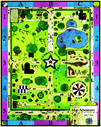 |
Map Adventures Lessons
These lessons come from the US Geological Survey, and
they are actually for younger children. I find that they work very well
for 4th grade, too, especially for the beginning of the school year…
Click here to read the full lesson plan on
The Box of Crayons Blog. |
| |
|
|
| |
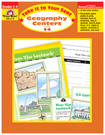 |
Take it to Your Seat Geography Centers
You can purchase this book or each individual lesson
in the book at the Evan-Moor Website link above. There are thirteen
centers in the book. I purchased two of them, so that everyone could
have a center to work on at the same time. After the map adventures
lessons, I spend about two weeks of history time just letting the
students work on these centers. While they work, I walk around to help
as needed and to observe how well each student works (since it is the
beginning of the year). These actually even cover a 4th grade Alabama
science objective, too! |
| |
|
|
| |
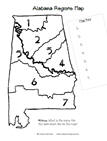 |
Alabama Regions Map: At-Home Project
I cannot take credit for this one! The wonderful
teachers I used to work with came up with it, but I have tweaked it and
made it my own. I give each student an
Alabama Regions Map Sheet that has
been copied onto heavy white cardstock and a
Letter Explaining the Project…
Click here to read the full lesson plan on The Box of Crayons Blog.
Other Documents From this Post:
Alabama Regions Map Answer Key |
| |
|
|
| |
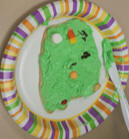 |
Edible Alabama Maps
I did not come up with this awesome lesson plan. I
borrowed parts of it from this
ALEX lesson plan and made it my
own. My students LOVED this lesson! I do not do the lesson exactly like
the ALEX lesson plan...
Click here to read the full lesson plan on
The Box of Crayons Blog.
Other Documents From this Post:
Edible Map Key |
| |
|
|
 |
2.) Describe cultures, governments, and economies of prehistoric and
historic Native Americans in Alabama.
|
|
 Examples: Examples: |
| |
 -
prehistoric Native Americans-Paleo-Indian, Archaic, Woodland,
Mississippian; -
prehistoric Native Americans-Paleo-Indian, Archaic, Woodland,
Mississippian; |
| |
 -
historic Native Americans-Choctaw, Chickasaw, Cherokee, Creek -
historic Native Americans-Choctaw, Chickasaw, Cherokee, Creek |
| |
 •
Identifying locations of prehistoric and historic Native Americans in
Alabama •
Identifying locations of prehistoric and historic Native Americans in
Alabama |
|
|
 •
Describing types of prehistoric life in Alabama Examples: plants,
animals, people •
Describing types of prehistoric life in Alabama Examples: plants,
animals, people |
| |
 •
Identifying roles of archaeologists and paleontologists •
Identifying roles of archaeologists and paleontologists |
|
 |
Alabama Studies Weekly
Studies Weekly that Address this ACOS Standard:
Week 1: The Great State of Alabama
Week 2: Prehistoric Plants and Animals
Week
3: American Indians of Alabama |
| |
|
|
| |
 |
Archaeology Trackstar
I made this Archaeology Trackstar which allows
students to learn about archaeology and paleontology independently in an
interactive way including games, interactive activities, and a little
4th grade-friendly reading. I ask the students to complete this sheet
with this TrackStar:
Everything You Need to Know About Archaeology
Sheet. |
| |
|
|
| |
 |
Moundville Trackstar
I made this Moundville Trackstar which allows
students to learn about Moundville by looking at pictures and by
identifying real artifacts! The students use this sheet that I made,
Artifact Record Sheet and these
two sheets from the
Alabama Archives website:
A Ceramic Calendar &
Indian Arrowheads of Alabama. |
| |
|
|
|
 |
Moundville Artifact Cards Match Activity
I made this activity from the information and photos
I found on the
Smithsonian's Museum of the American Indian
Collection website, and I completely recommend that you check
out that website! Everything for the activity is included in this
Moundville Artifact Cards Activity…
Click here to read the full lesson plan on
The Box of Crayons Blog.
Other Documents From this Post:
Moundville Artifact Cards Match Activity |
| |
|
|
| |
 |
At-Home Native American Poster Project
I do let students research at school in the computer
lab, but the rest of this project is completed at home! Those of you who
are familiar with my projects are probably already familiar with “team
points,” but for those of you who are not, here is an explanation of the
Requirements Letter and Rubric w/Grade and
Team Points…
Click here to read the full lesson plan on
The Box of Crayons Blog.
Other Documents From this Post:
Native American Poster Project Groups
(MS
Word Version) |
| |
|
|
| |
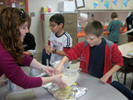 |
Cherokee Cornmeal Cookies
Here is the
Cherokee Cornmeal Cookies Recipe.
Making the cookies was the reward of the winning team from the At-Home
Native American Poster Project, but everyone got to eat them! We made
these in my old college toaster oven, and they were delicious...
Click here to read the rest of this activity on The Box of Crayons Blog. |
| |
|
|
| |
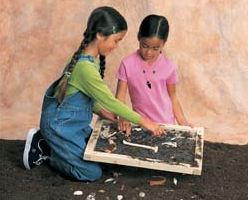 |
"Real" Archaeological Dig Activity (and
Paleontology, too!)
...Two summers ago, I was determined to find and make
resources to make my history lessons more meaningful and fun. The first
thing I did was look for something like this...an archaeology kit that
allows an entire class of students to experience an archaeological
dig...
Click here to read the rest of this activity on The Box of Crayons Blog. |
| |
|
|
 |
3.) List reasons for European exploration and settlement in Alabama and
the impact of Europeans on trade, health, land expansion, and tribal
reorganization of Native American populations in Alabama.
|
| |
 •
Locating European settlements in early Alabama •
Locating European settlements in early Alabama |
| |
 •
Explaining reasons for conflicts between Europeans and Native Americans
in Alabama from 1519 to 1840 •
Explaining reasons for conflicts between Europeans and Native Americans
in Alabama from 1519 to 1840 |
|
|
 Examples:
differing beliefs regarding land ownership, religious differences,
cultural differences, broken treaties Examples:
differing beliefs regarding land ownership, religious differences,
cultural differences, broken treaties |
|
 •
Identifying main causes, key people, and historical documents of the
American Revolution and the new nation •
Identifying main causes, key people, and historical documents of the
American Revolution and the new nation |
| |
 Examples: Examples: |
| |
 -
main causes-taxation, lack of representation, distrust of centralized
power; -
main causes-taxation, lack of representation, distrust of centralized
power; |
| |
 -
key people-George Washington, Thomas Jefferson, Benjamin Franklin; -
key people-George Washington, Thomas Jefferson, Benjamin Franklin; |
| |
 -
historical documents-Declaration of Independence, Constitution of the
United States -
historical documents-Declaration of Independence, Constitution of the
United States |
| |
 •
Naming social, political, and economic outcomes of the Creek Civil War
and the Creek War in Alabama •
Naming social, political, and economic outcomes of the Creek Civil War
and the Creek War in Alabama |
| |
 Examples: Examples: |
| |
 -
social-adoption of European culture by Native Americans, opening of
Alabama land for settlement; -
social-adoption of European culture by Native Americans, opening of
Alabama land for settlement; |
| |
 -
political-breaking of power of Native Americans, labeling of Andrew
Jackson as a hero and propelling him toward presidency; -
political-breaking of power of Native Americans, labeling of Andrew
Jackson as a hero and propelling him toward presidency; |
| |
 -
economic-acquisition of tribal land in Alabama by the United States -
economic-acquisition of tribal land in Alabama by the United States |
| |
 •
Identifying the impact of the Trail of Tears on Alabama's Native
Americans •
Identifying the impact of the Trail of Tears on Alabama's Native
Americans |
| |
 |
Alabama Studies Weekly
Studies Weekly that Address this ACOS Standard:
Week 4: European Exploration and Settlement
Week 5: A New Nation
Week 6: The Creek War
Week 7: Trail of Tears
|
| |
|
|
 |
4.) Describe the relationship of the five geographic regions of Alabama
to the movement of Alabama settlers during the early nineteenth century.
|
| |
 •
Describing natural resources of Alabama •
Describing natural resources of Alabama |
| |
 Examples:
water, trees, coal, iron, limestone, petroleum, natural gas, soil Examples:
water, trees, coal, iron, limestone, petroleum, natural gas, soil
|
| |
 •
Describing the natural environment of Alabama •
Describing the natural environment of Alabama |
| |
 Examples:
wildlife, vegetation, climate, bodies of water Examples:
wildlife, vegetation, climate, bodies of water |
| |
 •
Describing human environments created by settlement •
Describing human environments created by settlement |
|
 Examples:
housing, roads, place names Examples:
housing, roads, place names |
| |
 |
Alabama Studies Weekly
Studies Weekly that Address this ACOS Standard:
Week 12: Natural Regions of Alabama
Week 25: Alabama’s Rivers and Waterways
Week 26: Alabama Places
Week 27: Alabama’s Climate and Resources
|
| |
|
|
 |
5.) Describe Alabama's entry into statehood, including Alabama's
constitutions and the three branches of government.
|
|
 •
Explaining political and geographic reasons for changes in location of
Alabama's state capital •
Explaining political and geographic reasons for changes in location of
Alabama's state capital |
|
 •
Identifying prominent political leaders during early statehood in
Alabama •
Identifying prominent political leaders during early statehood in
Alabama |
| |
 Examples:
William Wyatt Bibb, Thomas Bibb, Israel Pickens, William Rufus King Examples:
William Wyatt Bibb, Thomas Bibb, Israel Pickens, William Rufus King |
| |
 |
Alabama Studies Weekly
Studies Weekly that Address this ACOS Standard:
Week 1: The Great State of Alabama
Week 8: Alabama Statehood
Week 9: The 22nd State |
| |
|
|
 |
6.) Identify cultural, economic, and political aspects of the lifestyles
of early nineteenth-century farmers, plantation owners, slaves, and
townspeople.
|
| |
 Examples: Examples: |
| |
 -
cultural-housing, education, religion, recreation; -
cultural-housing, education, religion, recreation; |
| |
 -
economic-transportation, livelihood; -
economic-transportation, livelihood; |
| |
 -
political-inequity of legal codes -
political-inequity of legal codes |
| |
 •
Recognizing the impact of slavery on Alabama during the early nineteenth
century •
Recognizing the impact of slavery on Alabama during the early nineteenth
century |
| |
 •
Identifying major areas of agricultural production using an Alabama map •
Identifying major areas of agricultural production using an Alabama map
|
| |
 Example:
cotton raised in the Black Belt and fertile river valleys Example:
cotton raised in the Black Belt and fertile river valleys |
| |
 |
Alabama Studies Weekly
Studies Weekly that Address this ACOS Standard:
Week 10: Frontier Life in Alabama
|
| |
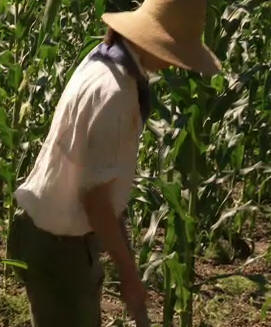 |
Colonial Life TrackStars
Ok, so this is a "Colonial Life" TrackStar which is not technically
about the 19th century, but there are so many similarities that I had to
post this activity. In this activity, you get to watch lots of brief
videos about various things from Colonial Williamsburg's awesome website
in order to learn about what life used to be like.
There are two TrackStars. In the
Colonial Life Part 1 TrackStar,
you will learn information about the American Revolution, the
restoration of Colonial Williamsburg, and the historic building of the
Charlton Coffeehouse which includes how bricks, mortar, wall, plaster,
etc. were made from scratch. There is even a video on how chocolate was
made from scratch!
In the
Colonial Life Part 2 TrackStar,
you will learn information about slaves, children, fifers, and drummers
of the 18th century and about how a cannon was made in the 18th century…
Click here to read the full lesson plan on
The Box of Crayons Blog.
Other Documents From this Post:
Colonial Life TrackStar Worksheet (MS Word) and
Colonial Life TrackStar
Worksheet Key (MS Word).
|
| |
|
|
 |
7.) Identify reasons for Alabama's secession from the Union, including
sectionalism, slavery, state rights, and economic disagreements.
|
| |
 •
Identifying Alabama's role in the organization of the Confederacy •
Identifying Alabama's role in the organization of the Confederacy
|
| |
 Examples:
secession convention, Montgomery as first state capital, inauguration
ceremony for leaders Examples:
secession convention, Montgomery as first state capital, inauguration
ceremony for leaders |
| |
 |
Alabama Studies Weekly
Studies Weekly that Address this ACOS Standard:
Week 1: The Great State of Alabama
Week 13: Alabama Secedes |
| |
|
|
 |
8.) Explain Alabama's role in and economic support of the Civil War.
|
| |
 Examples:
provision of supplies through the Port of Mobile; armament center at
Selma; production of iron products, munitions, textiles, and ships Examples:
provision of supplies through the Port of Mobile; armament center at
Selma; production of iron products, munitions, textiles, and ships |
| |
 •
Explaining resulting economic conditions of the Civil War, including the
collapse of economic structure, destruction of the transportation
infrastructure, and high casualty rates •
Explaining resulting economic conditions of the Civil War, including the
collapse of economic structure, destruction of the transportation
infrastructure, and high casualty rates |
| |
 |
Alabama Studies Weekly
Studies Weekly that Address this ACOS Standard:
Week 1: The Great State of Alabama
Week 14: Civil War in Alabama
|
| |
 |
Who Am I? Civil War People Mysteries Computer Lab Activity
I feel that if you are to understand anything about
the Civil War, you have to understand the people in it. This is an
interactive activity that asks the students to use artifacts and clues to determine the identity of
several people who lived and participated in the Civil War as it
explains what all of those artifacts are and what in the world they were used
for. Here is the reading guide-like worksheet that I made to go with it:
Civil War Who Am I Activity (MS
Word) and
Civil War Who Am I Activity Key (MS
Word). |
| |
|
|
 |
9.) Describe political, social, and economic conditions in Alabama
during Reconstruction.
|
| |
 Examples: Examples:
|
| |
 -
political-military rule, presence of Freedmen's Bureau, Alabama's
readmittance to the Union, sharecropping; -
political-military rule, presence of Freedmen's Bureau, Alabama's
readmittance to the Union, sharecropping; |
| |
 -
social-carpetbaggers, scalawags, Ku Klux Klan (KKK); -
social-carpetbaggers, scalawags, Ku Klux Klan (KKK); |
| |
 -
economic-sharecropping, scarcity of goods and money -
economic-sharecropping, scarcity of goods and money |
| |
 •
Describing the Thirteenth, Fourteenth, and Fifteenth Amendments to the
Constitution of the United States •
Describing the Thirteenth, Fourteenth, and Fifteenth Amendments to the
Constitution of the United States |
| |
 •
Identifying the role of African Americans in politics during
Reconstruction in Alabama •
Identifying the role of African Americans in politics during
Reconstruction in Alabama |
| |
 Examples: Examples: |
| |
 -
Benjamin Sterling Turner, United States House of Representatives
(1871-1873); -
Benjamin Sterling Turner, United States House of Representatives
(1871-1873); |
| |
 -
Jeremiah Haralson, Alabama State Legislature (1870-1874) and United
States House of Representatives (1875-1877); -
Jeremiah Haralson, Alabama State Legislature (1870-1874) and United
States House of Representatives (1875-1877); |
| |
 -
James Rapier, United States House of Representatives (1873-1875) -
James Rapier, United States House of Representatives (1873-1875)
|
| |
 •
Describing policies of major political parties in Alabama •
Describing policies of major political parties in Alabama |
| |
 |
Alabama Studies Weekly
Studies Weekly that Address this ACOS Standard:
Week 15: Reconstruction in Alabama |
| |
|
|
 |
10.) Describe significant social and educational changes in Alabama
during the late nineteenth and early twentieth centuries.
|
| |
 Examples: Examples: |
| |
 -
social-implementation of "separate but equal" court decision (Plessy
versus Ferguson), birth of National Association for Advancement of
Colored People (NAACP) through Niagara Movement; -
social-implementation of "separate but equal" court decision (Plessy
versus Ferguson), birth of National Association for Advancement of
Colored People (NAACP) through Niagara Movement; |
| |
 -
educational-establishment of normal schools and land-grant colleges such
as Alabama Agricultural and Mechanical (A & M) University, Auburn
University, and Tuskegee University -
educational-establishment of normal schools and land-grant colleges such
as Alabama Agricultural and Mechanical (A & M) University, Auburn
University, and Tuskegee University |
| |
 •
Explaining the development and changing role of industry, trade, and
agriculture in Alabama during the late nineteenth and early twentieth
centuries, including the rise of populism •
Explaining the development and changing role of industry, trade, and
agriculture in Alabama during the late nineteenth and early twentieth
centuries, including the rise of populism |
| |
 •
Explaining the impact of the voting rights revision in the Alabama
Constitution of 1901, including Jim Crow Laws •
Explaining the impact of the voting rights revision in the Alabama
Constitution of 1901, including Jim Crow Laws |
| |
 Example:
restriction of eligible voters Example:
restriction of eligible voters |
| |
 •
Identifying Alabamians who made contributions in the fields of science,
education, the arts, the military, politics, and business during the
late nineteenth and early twentieth centuries •
Identifying Alabamians who made contributions in the fields of science,
education, the arts, the military, politics, and business during the
late nineteenth and early twentieth centuries |
| |
 Examples: Examples: |
| |
 -
science-George Washington Carver, William Gorgas, Robert Van de Graff; -
science-George Washington Carver, William Gorgas, Robert Van de Graff; |
| |
 -
education-Booker T. Washington, Julia Tutwiler, Helen Keller, Maria
Fearing; -
education-Booker T. Washington, Julia Tutwiler, Helen Keller, Maria
Fearing; |
| |
 -
arts-William Christopher (W. C.) Handy; -
arts-William Christopher (W. C.) Handy; |
| |
 -
military-Joe Wheeler, Richmond Pearson Hobson; -
military-Joe Wheeler, Richmond Pearson Hobson; |
| |
 -
politics-John Tyler Morgan, Patti Ruffner Jacobs, Thomas E. Kilby; -
politics-John Tyler Morgan, Patti Ruffner Jacobs, Thomas E. Kilby; |
| |
 -
business-William Pettiford -
business-William Pettiford |
| |
 •
Discussing cultural contributions from various regions of Alabama that
contributed to the formation of a state heritage •
Discussing cultural contributions from various regions of Alabama that
contributed to the formation of a state heritage |
| |
 Examples:
folklore, folk art, vernacular architecture Examples:
folklore, folk art, vernacular architecture |
| |
 |
Alabama Studies Weekly
Studies Weekly that Address this ACOS Standard:
Week 1: The Great State of Alabama
Week 16: Social and Economic Changes
Week 17: Education and Culture
Week 18: Who’s Who at the Turn of the Century |
|
|
|
 |
11.) Describe the impact of World War I on Alabamians.
|
| |
 Examples:
migration of African Americans to the North and West, utilization of
Alabama's military installations and training facilities, increased
production of goods for war effort Examples:
migration of African Americans to the North and West, utilization of
Alabama's military installations and training facilities, increased
production of goods for war effort |
| |
 •
Recognizing Alabama participants in World War I •
Recognizing Alabama participants in World War I |
| |
 Example:
Alabama Rainbow Division Example:
Alabama Rainbow Division |
| |
 •
Identifying the use of new technology in World War I •
Identifying the use of new technology in World War I |
| |
 Examples:
airplanes, machine guns, chemical warfare Examples:
airplanes, machine guns, chemical warfare |
| |
 |
Alabama Studies Weekly
Studies Weekly that Address this ACOS Standard:
Week 19: WWI |
| |
|
|
| |
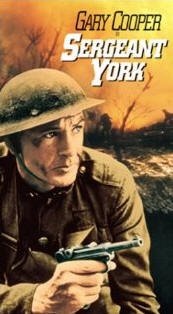 |
Movie: Sergeant York
Ok, so Sergeant York is about a WWI hero from
Tennessee, not Alabama. This is such a good movie about WWI, though.
Since it was made in the early era of movies, there are war scenes, but
there is no blood and no gore...Usually by the time the students see
Sergeant York in a shooting contest, they are hooked...From this movie:
they will gain an understanding of what life was like in the rural South
back in this time period, what boot camp and training was like for these
soldiers, and what war was like with all of the new technology of the
time. Possibly most importantly, they also get to experience the story
of a truly humble war hero whose intelligence was gained in the
backwoods of the South and whose integrity ran so deep that it
influenced a nation.
Click here to read more of this movie review on The Box of Crayons Blog. |
| |
|
|
 |
12.) Explain effects of the events of the 1920s and the Great Depression
on different socioeconomic groups.
|
| |
 Examples: Examples: |
| |
 -
effects of 1920s-increase in availability of electricity and employment
opportunities, increase in wages and product consumption, overproduction
of goods, stock market crash; -
effects of 1920s-increase in availability of electricity and employment
opportunities, increase in wages and product consumption, overproduction
of goods, stock market crash; |
| |
 -
effects of Great Depression -
effects of Great Depression |
| |
 -overcropping
of land, unemployment, poverty, establishment of new federal programs -overcropping
of land, unemployment, poverty, establishment of new federal programs |
| |
 •
Describing effects of supply and demand on the economy •
Describing effects of supply and demand on the economy |
| |
 |
Alabama Studies Weekly
Studies Weekly that Address this ACOS Standard:
Week 20: The Great Depression |
| |
|
|
| |

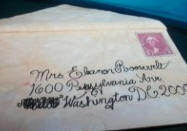 |
Hoover to Roosevelt Overview & Letters to
Mrs. Roosevelt
...This activity is a two-part activity. The first is
a PowerPoint presentation that gives the students a picture of history
at that time from the time Hoover was in office to the time Roosevelt
was in office... The second part consists of reading letters from
children to Mrs. Roosevelt... These letters are copies of actual letters
to Mrs. Eleanor Roosevelt from children during the Great Depression...
Click here to read the full lesson plan on
The Box of Crayons Blog.
Other Documents From this Post:
Hoover to Roosevelt PowerPoint,
Letters to Mrs. Roosevelt (MS
Word Version), &
Questions to Letters to Mrs. Roosevelt
(MS
Word)
Related Post from The Box of Crayons Blog:
Making Letters to Mrs. Roosevelt Look Old,
Aged, & Authentic |
| |
|
|
 |
13.) Describe the economic and social impact of World War II on
Alabamians.
|
| |
 Examples:
entry of women into workforce, increase in job opportunities, rationing,
utilization of Alabama's military installations Examples:
entry of women into workforce, increase in job opportunities, rationing,
utilization of Alabama's military installations |
| |
 •
Recognizing Alabama participants in World War II •
Recognizing Alabama participants in World War II |
| |
 Examples:
Tuskegee Airmen, women in the military Examples:
Tuskegee Airmen, women in the military |
| |
 •
Locating military bases in Alabama •
Locating military bases in Alabama |
| |
 |
Alabama Studies Weekly
Studies Weekly that Address this ACOS Standard:
Week 1: The Great State of Alabama
Week 21: WWII |
| |
|
|
 |
14.) Describe the social, political, and economic impact of the modern
Civil Rights Movement on Alabama.
|
| |
 •
Identifying important people and events of the modern Civil Rights
Movement •
Identifying important people and events of the modern Civil Rights
Movement |
| |
 Examples: Examples:
|
| |
 -
people-Martin Luther King, Jr., George C. Wallace, Rosa Parks; -
people-Martin Luther King, Jr., George C. Wallace, Rosa Parks; |
| |
 -
events-Montgomery bus boycott, Birmingham church bombing,
Selma-to-Montgomery march -
events-Montgomery bus boycott, Birmingham church bombing,
Selma-to-Montgomery march |
| |
 •
Identifying benefits of the 1964 Civil Rights Act and the 1965 Voting
Rights Act •
Identifying benefits of the 1964 Civil Rights Act and the 1965 Voting
Rights Act |
| |
 |
Alabama Studies Weekly
Studies Weekly that Address this ACOS Standard:
Week 1: The Great State of Alabama
Week 22: Civil Rights Activists
Week 23: The Civil Rights Movement |
| |
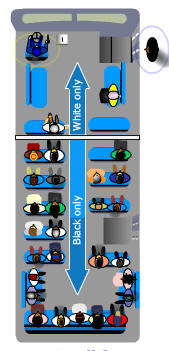 |
Before the Boycott: Riding the Bus
...In this activity, you'll learn what schools,
restaurants, cars, housing, and more were like for African-Americans in
Montgomery, AL in 1955. Most of all, though, you'll learn what the buses
were like for African-Americans in Montgomery, AL in 1955...
Click here to read the full lesson plan on
The Box of Crayons Blog.
Other Documents From this Post:
Before the Boycott - Riding the Bus
Interactive Activity (MS
Word Version) &
Before the Boycott - Riding the Bus
Interactive Activity Key (MS
Word Version) |
| |
|
|
 |
15.) Identify major world events that have impacted Alabama since 1950.
|
| |
 Examples:
Korean Conflict, Vietnam War, Persian Gulf War, War on Terrorism Examples:
Korean Conflict, Vietnam War, Persian Gulf War, War on Terrorism |
|
 •
Recognizing Alabamians who have made significant contributions to
society since 1950 •
Recognizing Alabamians who have made significant contributions to
society since 1950 |
| |
 Examples:
Henry "Hank" Aaron, Hugo Black, Paul "Bear" Bryant, Nat "King" Cole,
Marva Collins, Jeremiah Denton, A. G. Gaston, Mae C. Jemison, Harper
Lee, Willie Mays, Harold (Hal) Moore, Thomas Moorer, Jesse Owens,
Condoleezza Rice, Wernher von Braun, George C. Wallace, Lurleen B.
Wallace, Hank Williams, Kathryn Tucker Windham Examples:
Henry "Hank" Aaron, Hugo Black, Paul "Bear" Bryant, Nat "King" Cole,
Marva Collins, Jeremiah Denton, A. G. Gaston, Mae C. Jemison, Harper
Lee, Willie Mays, Harold (Hal) Moore, Thomas Moorer, Jesse Owens,
Condoleezza Rice, Wernher von Braun, George C. Wallace, Lurleen B.
Wallace, Hank Williams, Kathryn Tucker Windham |
| |
 |
Alabama Studies Weekly
Studies Weekly that Address this ACOS Standard:
Week 24: Alabama and the World
|
| |
|
|
 |
16.) Describe the impact of population growth on cities, major road
systems, demographics, natural resources, and the natural environment of
Alabama during the twentieth century.
|
| |
 •
Describing how technological advancements brought change to Alabamians
during the twentieth century •
Describing how technological advancements brought change to Alabamians
during the twentieth century |
| |
 Examples:
improvement of quality of life and expanded employment opportunities
through use of electricity, improvement of transportation through
introduction of automobiles and airplanes, improvement of communication
through use of satellites and cellular telephones Examples:
improvement of quality of life and expanded employment opportunities
through use of electricity, improvement of transportation through
introduction of automobiles and airplanes, improvement of communication
through use of satellites and cellular telephones |
| |
 •
Describing the growing influence of foreign-based companies •
Describing the growing influence of foreign-based companies |
| |
 |
Alabama Studies Weekly
Studies Weekly that Address this ACOS Standard:
Week 26: Alabama Places
Week 27: Alabama’s Climate and Resources
Week 28: The Changing Face of Alabama |
| |
|
|
| |
|
|
| |
|
|
| |
|
|
